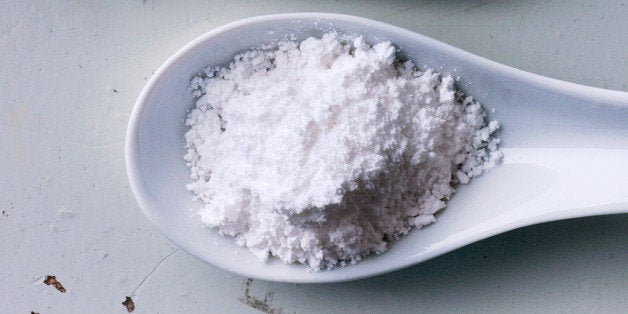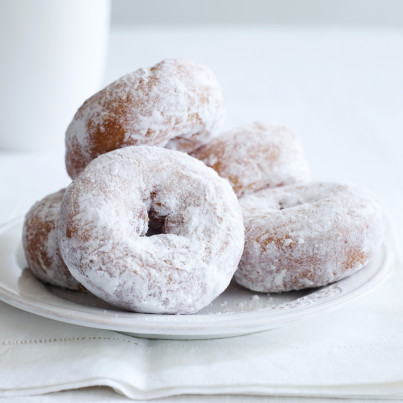
Powdered sugar is one of those ingredients you probably grew up with and still use frequently, but that you might not be able to fully explain. Why do you use it instead of granulated sugar, and what's the difference between powdered sugar and confectioners sugar? Seriously, we know it makes doughnuts dreamy, but what the f*ck is powdered sugar?

For such a common ingredient, these are questions we know we should be able to answer. But sometimes you live your whole life with an ingredient or food and never quite fully understand it. And then it just gets too embarrassing to ask the questions you've always wondered. We're no strangers to this conundrum here at HuffPost Taste, and we feel no shame in investigating those seemingly obvious questions. We took the fall so you wouldn't have to, and got to the bottom of the what, why and hows of powdered sugar. Here's what you need to know:
Powdered sugar is exactly what it sounds like: sugar that has been ground so fine that it becomes a powder. It's then mixed with a little bit of corn starch to prevent it from clumping. If necessary, you can make powdered sugar at home by pulverizing granular sugar in your food processor, adding corn starch and sifting the final product through a mesh strainer.

So what's the difference between powdered sugar and confectioners sugar? Nothing. Powdered sugar and confectioners sugar are the same thing. What's Cooking America speculates that the terms are simply a regional preferences and points out that in England and Canada, powdered sugar is called icing sugar. It's also sometimes called 10X, which refers to how fine it is. Why it's called confectioners sugar when bakers use both regular sugar and the powdered stuff is beyond us, but we can say with certainty that it's "confectioners sugar" -- not "confectionary sugar." Get it right or resign to irritating us forever. Domino spells "confectioners sugar" without an apostrophe and also with an apostrophe at the end of the word, which is also how most people write it out, but never with an apostrophe before the "s."
Apostrophe placement aside, confectioners, powdered or icing sugar are all the same thing and are the best kind of sugars to use for icings and glazes because, according to Domino, "they blend easier in uncooked frostings and dissolve faster in cooked types." CooksInfo explains that you can substitute 1 cup of granular sugar for 1 3/4 cups of powdered in recipes, but not for icings and frostings. If you try to use regular sugar, it won't melt into the icing the same way and you'll be left with a grainy texture.

In addition to using powdered sugar primarily for icings and glazes, it's wonderful for sprinkling on top of baked goods, and you can also use it for whipped cream. Because it's so light, powdered sugar won't weigh down your fluffy (and temperamental) whipped cream, so make your life easier by reaching for the confectioners over the granular.
Now that you know exactly what it is and how to use it, go forth and use that powdered, confectioners, icing, 10x sugar with confidence. See below for some killer frostings that put this sugar-with-many-names to good use.